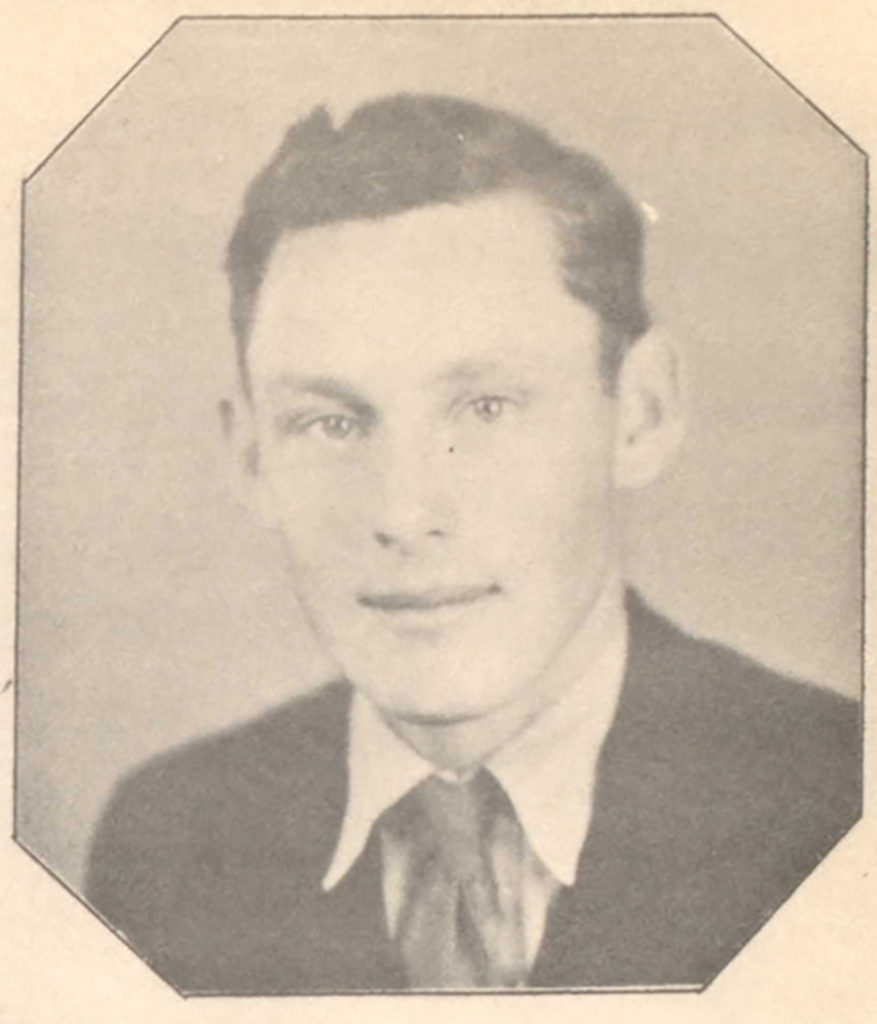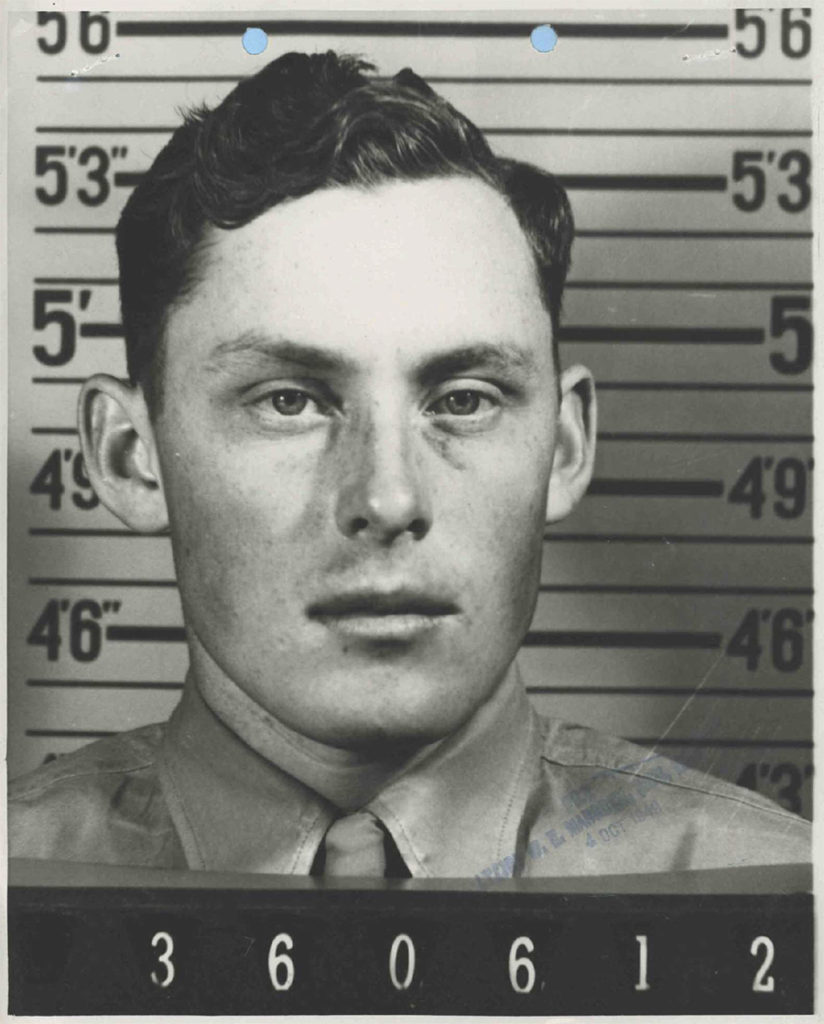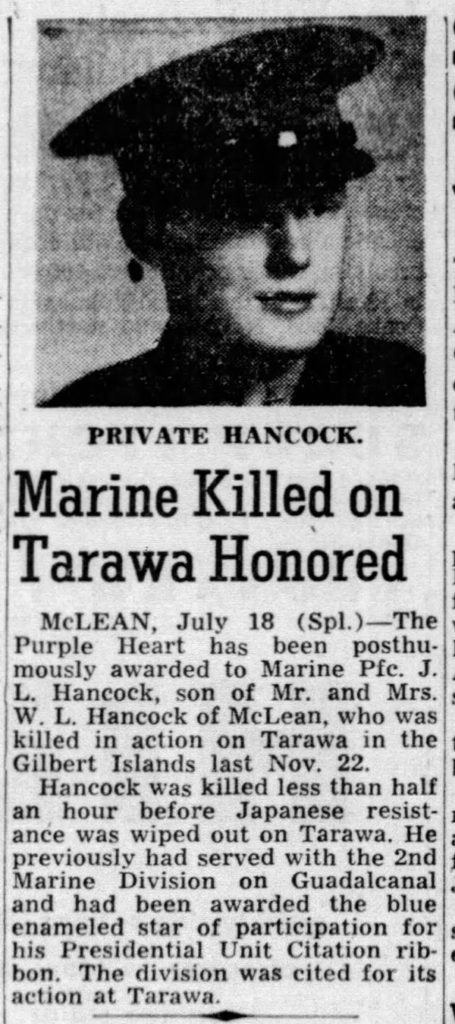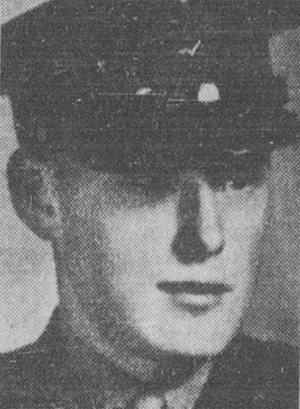The DPAA has announced that Private First Class J. L. Hancock, a Marine killed in action Tarawa, was accounted for on 17 February 2021.
Born “John Loss” but known universally as “J. L.,” young Hancock spent his life in McLean, Texas from his birth on 8 May 1922 until he left to join the Marine Corps in 1942. His family had a farm, and JL learned to love working the land. As a youth, he joined Future Farmers of America and was noted around McLean for his ability to judge local agricultural contests. He also maintained excellent grades at McLean High School, and according to the student body “demonstrated the true characteristics of what all past and present Future Farmers of America stand for.” After graduating with the class of 1940, he almost certainly went back to work on the family farm.


Hancock enlisted from Oklahoma City on 17 February 1942, and after completing boot camp spent the entirety of his service with Company B, First Battalion, 6th Marines. He saw his first combat in early 1943 on the island of Guadalcanal; while he escaped wounds or injury, he did contract malaria during the campaign. The ailment would cause him some trouble during 1943, including at least one trip to the hospital while his unit recuperated and re-trained in New Zealand.

PFC Hancock landed on Betio, Tarawa atoll on 21 November 1943 and was killed in action the following day. His company was the focal point of an intense Japanese banzai attack during the night of 21-22 November, and it is likely that Hancock fell during this action, with shrapnel wounds in his head. A contemporary newspaper reported that he died just thirty minutes before the last Japanese resistance was overcome.
Hancock was buried in a long trench along with some thirty other Marines, mostly members of his battalion. This location, known as “Row D” of the East Division Cemetery (or “Cemetery 33”) was obliterated in the months after the battle, and the coordinates lost to history. Graves Registration personnel operating on Betio in the late 1940s were unable to locate the site, and Hancock was declared non-recoverable.
In 2019, an expedition from non-profit organization History Flight located a burial feature which turned out to be Row D. Hancock’s remains were among those recovered, and he was officially identified in February 2021.
Welcome home, PFC Hancock. Semper Fi.
We are actively seeking information for PFC Hancock’s profile page.
Are you a family member or former comrade of this Marine? Do you have stories or photos to share? Please contact MissingMarines and help us tell his story.
